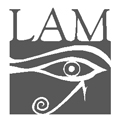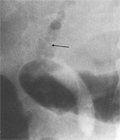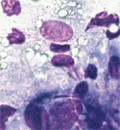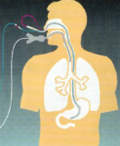The eLitMed.hu medical portal uses computer cookies for convenient operation. Detailed information can be found in the Cookie-policy.
Lege Artis Medicinae - 2004;14(10)
Content
[CURRENT PRACTICAL VACCINOLOGY]
[The author deals with the current situation and new trends of vaccinology by focusing on the interests of practitioners. The main topics are the changes of antigens (such as pertussis, measles, or poliomyelitis) to provide better efficacy and milder reactogenity or less adverse events. Purifying the vaccines, like thiomersal and human proteins free vaccines is another proven method to achieve better safety. New antigens e.g. Rota, Lyme, meningococcus B are in the pipeline of vaccinology. The aim of producing a combined vaccine is to achieve immunity against more diseases with less inconvenience for the patient, while achieving higher vaccine coverage (DPT-Hib-HBV-IPV). The epidemiological and clinical experiences will influence the current vaccine schedule such as revaccinations of MMR, and remove the need for revaccinations of BCG and hepaB. The special target groups of immunizations are the elderly and patients with chronic disease. Groups of specialists are working on the vaccine recommendation guidelines for certain risk groups. At the same time, with the successful eradication of polio in Europe the practitioners now have to face the antivaccination movement, as well. The main tools to convince people about the benefit of vaccinations are health education and information.]
[LONG-TERM RESULTS OF ENDOSCOPIC SPHINCTEROTOMY - EFFECTS OF THE TRANSECTION OF BILE PAPILLA]
[The abolishment of the choledochoduodenal pressure gradient due to endoscopic sphincterotomy results in the enhancement of the enterohepatic circulation of the bile salts, in the reduction of the cholesterol saturation index and in the modification of the gallbladder function: the reduced gallbladder storage time and the increased ejection fraction facilitates gallbladder emptying. On the contrary, bacterial colonisation of the bile ducts due to duodenobiliary reflux plays a causative role in the increased risk of pigment stone formation. However, when the biliary tree is well-drained, no clinically relevant chronic inflammation develops, furthermore there is no evidence for an increased cancer risk caused by the duodenobiliary reflux. Long-term complications may occur in about 12%, as the recurrence of common bile duct stones, post-EST papillary stenosis, and biliary symptoms caused by retained gallbladder stones. Risk factors for recurrence of bile duct stones are juxtapapillary duodenum diverticulae and persistently dilated bile ducts being the main reason for papillary restenosis and sphincterotomies are mainly performed because of papillary stenosis. In cases of retained gallbladder with stones patency of the cystic duct and contractility of the gallbladder are important predictive factors of late gallbladder complications as it was confirmed by our investigations. Accordingly, small gallbladder stones may pass spontaneously after EST. The indication of a cholecystectomy following EST should be considered individually, particularly in elderly patients. As 30-year-experience confirms, EST is a safe and effective treatment of choledocholithiasis and papillary stenosis even in the long term, and also in young patients. Regular follow-up of patients with high risk for recurrent biliary symptoms is recommended to detect late complications and treat them endoscopically in time.]
[THE SIGNIFICANCE OF THE CARE OF CHILDREN WITH CLEFT LIP AND PALATE IN THE GENERAL PRACTICE]
[The cleft lip and palate (i.e. facial cleft) is a frequent and distorting abnormality. The basics of the successful management are the early introduction of therapy and a well-trained team with all relevant specialists included (surgeon, otolaryngologist, orthodontist, speech therapist) as well as good collaboration with the parents and general practitioners being also an important factor. The author with his co-workers has performed more than 6000 surgeries in about 3500 children with facial cleft in the last 45 years and has treated 60-70 patients annuallly with velopharyngeal insufficiency without cleft. According to his experience and international data he summarizes the etiology, pathomechanism of facial clefts and discusses its symptoms, functional consequences and the surgical and conservative solutions are suggested. The recent Hungarian prevalence is 1:500. Specific prevention does not exist, the 5-6% recurrent cleft risk may be decreased to half by administration of folic acid. The generally accepted timing of the lip plasty is the 3-month age. The palatoplasty may be performed in one or two stages, but closure of the velum should be made before the development of speech by all means. The logopedic treatment (speech therapy) should be started, if the speech disorder is already obvious and the child is able to cooperate with the speech therapist. If conservative therapy is unsuccessful, (velo)pharyngoplasty is proposed at the age of 5. The orthodontic treatment should begin in mixed dentition, major nose correction and oral surgery are allowed only after puberty. Just because of a cleft the infant does not aspirate, the brestfeeding is beneficial and could be performed in most cases. Regular hearing control is recommended because of frequent ear and hearing problems. It is suggested to provide the parents with written instruction about outcome, prognosis and timetable of management, which could be helpful also for the general practitioners.]
[TRANSBRONCHIAL NEEDLE ASPIRATION IN THE DIAGNOSIS OF SARCOIDOSIS]
[INTRODUCTION - The histological pattern of sarcoidosis and cytological characteristics are similarly unspecific. Nevertheless, both forms of the diagnosis based on morphology can be taken into consideration if the clinical picture and chest X-ray respectively, are fitted and other diseases are excluded. PATIENTS, METHOD AND RESULTS - Enlargement of hilar lymph nodes is present in 80% of cases of sarcoidosis. In this study, transcarinal needle aspiration combined with rapid on-site cytological staining was performed in the case of 33 patients with I. or II. stage of sarcoidosis. The sensitivity was found to be 76%. CONCLUSION - Since the cytologist can inform the bronchologist fairly soon: during the bronchoscopy, bronchial mucosal biopsies or transbronchial lung biopsies are only necessary to obtain in about quarter of patients.]
[SUCCESSFUL TREATMENT OF WHIPPLE'S DISEASE IN A PATIENT WITH LYMPH NODE ENLARGEMENT]
[INTRODUCTION - Intestinal lipodystrophy, Whipple’s disease is an uncommon, chronic, systemic bacterial infection. It occurs predominantly in Caucasian males older than 40 years. The gastrointestinal tract is the most frequently involved organ, with clinical manifestations such as abdominal pain, malabsorption syndrome with diarrhea and weigth loss. Patient may present with low grade fever or fever of unknown origin, arthritis, lymphadenopathy, skin hyperpigmentation, endocarditis, pleuritis and peripheral and central neurological manifestations. Due to the wide variability of symptoms, the clinical diagnosis is very difficult and it is often made only years or even decades after the initial presentation. CASE REPORT - A 51-year-old Caucasian race man was admitted to the hospital with weigth loss and signs of subileus, referred for suspected lymphoma. After the exploratory laparotomy and lymphadenectomy the histological and the electron microscopical diagnosis was Whipple’s disease which was confirmed with histology from deep duodenal biopsy. Trimethoprim and sulfamethoxazole therapy for 6 months resulted in complete clinical and molecular biological healing. CONCLUSION - Clinical signs of Whipple’s dease are non-specific and may mimic Crohn’s disease, coeliac disease, amyloidosis, macroglobulinaemia, histoplasmosis, infection with non-tuberculotic mycobacterium in AIDS patients and lymphomas. Therefore, differential diagnosis is of critical importance. The natural evolution of the disease without treatment is always fatal. Trimethoprim and sulfamethoxazole for at least 1 year is usually considered adequate to eradicate the infection.]
[COST-EFFECTIVENESS OF PIMECROLIMUS CREAM - A NEW TREATMENT FOR ATOPIC DERMATITIS IN HUNGARY]
[OBJECTIVE - To assess the costs, consequences and cost-effectiveness of pimecrolimus cream 1% in the treatment of children with atopic dermatitis in Hungary. METHODS - A Markov-model for atopic dermatitis developed by the Erasmus University (Rotterdam, the Netherlands) was adopted to the Hungarian health care setting. The model is based on a double-blind, multicenter, randomized, parallelgroup study. Patients were randomised (2:1) to receive pimecrolimus treatment (i.e. emollients, pimecrolimus, medium potency topical corticosteroids) or standard of care (emollients, vehicle, medium potency topical corticosteroids). The study was conducted in children and adolescents (2 to 18 years of age). Hungarian cost vectors were calculated by linking severity of disease as defined by Investigator’s Global Assessment (IGA) to average resource use. Resource use was multiplied by drug costs and unit costs as published in official databases. RESULTS - Pimecrolimus treatment has an incremental cost of HUF 143 897 over standard care. This additional cost of care resulted in an incremental 0.05 QALY gain over the 6 months period. The incremental cost effectiveness ratio was 2 863 913 HUF/QALY for the pimecrolimus therapy. CONCLUSION - Pimecrolimus is more costeffective than many other health care interventions currently reimbursed by the Hungarian National Health Fund.]
[THE ANALYSIS OF LIFE EVENTS IN HUNGARY]
[INTRODUCTION - In the social vulnerability model the concept of Life Events is the measure of forces and life events presenting in the social field that makes someone susceptible to mental illnesses. The stress value of these events add up. The Life Events Scale by Paykel is a questionnaire used in international practice. The objective of this study is the Hungarian adaptation and introduction of the Life Events Scale in the national practice, the international comparison of our results, the comparison of healthy people with the patient population and the analysis by social data. PATIENTS AND METHOD - The questionnaires were filled in by both healthy people and different patient populations. The participants rated the life events between 0-7 points according to their degree of causing stress, then they indicated whether it had happened with them. This was followed by a questionnaire about social data. We separated question groups by factor analysis: losses, changes, failures, difficulties, joyful events. RESULTS - When making the international comparison we only found differences in two areas: becoming unemployed and infidelity/divorce. Young people scored losses higher, while older ones scored changes higher. Those who declared themselves as religious scored suicide attempts higher. The mean scores of patient populations were higher compared to healthy subjects. The number of life events occurred was the highest in the depression-suicide attempt group. CONCLUSION - Our results can be used in everyday clinical practice and may be extremely important in suicide prevention.]
1.
Clinical Neuroscience
[Headache registry in Szeged: Experiences regarding to migraine patients]2.
Clinical Neuroscience
[The new target population of stroke awareness campaign: Kindergarten students ]3.
Clinical Neuroscience
Is there any difference in mortality rates of atrial fibrillation detected before or after ischemic stroke?4.
Clinical Neuroscience
Factors influencing the level of stigma in Parkinson’s disease in western Turkey5.
Clinical Neuroscience
[The effects of demographic and clinical factors on the severity of poststroke aphasia]1.
2.
Clinical Oncology
[Pancreatic cancer: ESMO Clinical Practice Guideline for diagnosis, treatment and follow-up]3.
Clinical Oncology
[Pharmacovigilance landscape – Lessons from the past and opportunities for future]4.
5.















